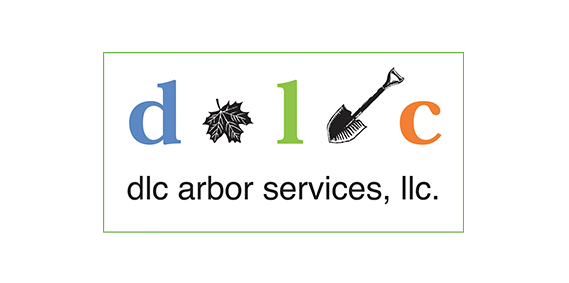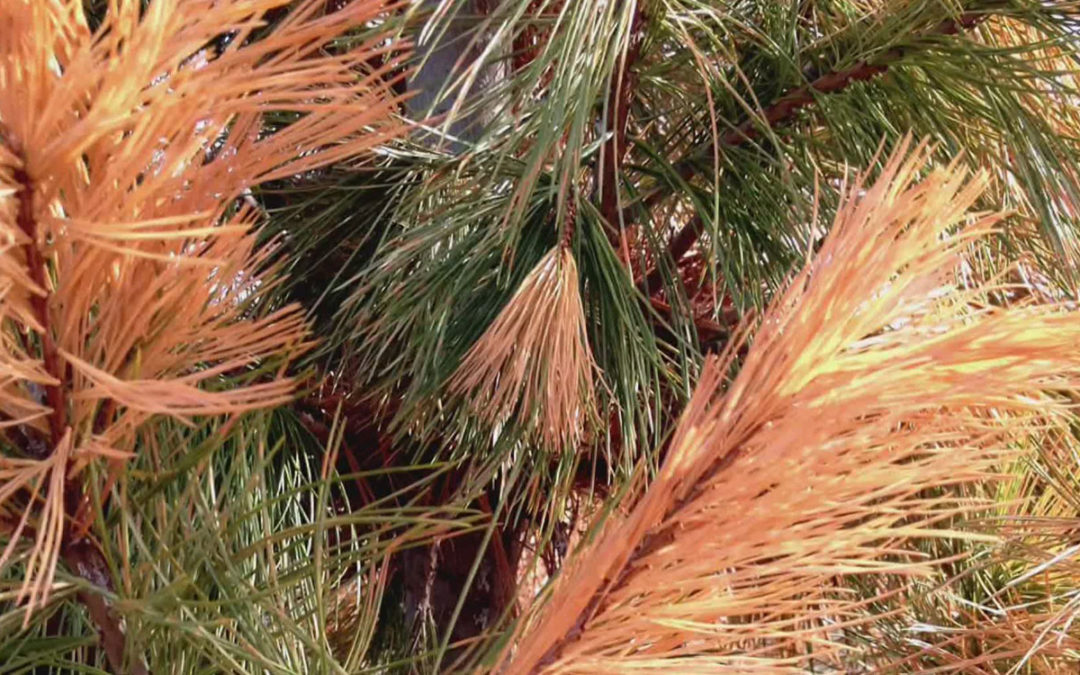Each year we are experiencing more unprecedented warm and dry days well into fall and Winter; this year is no different. While it is easy to relax once the leaves begin to change and the irrigation system is winterized, October is the beginning of the dry season and like a hibernating bear, your trees have slowed down but are still alive. And warm, dry days wake up your trees like someone poking a sleeping bear with a stick.
Winter Watering Includes Fall Watering Too
The Denver area’s five driest months of the year are October through February, and since three of those five months are before the first day of Winter on December 21st, calling it “winter watering” is misleading. Coincidentally, automatic irrigation systems are shut off and winterized in October at the beginning of the dry season right when supplemental irrigation is needed most. Waiting until Winter to hand water misses three of the driest (and hottest) months! So, by then, irreparable damage may have already occurred. Plus, root growth occurs in Fall and water is needed to promote this essential process. Maybe, instead, we should call it “dry-season watering” (but it can be dry during the summer too) or call it “dormant-season watering” (but some trees don’t lose their leaves until after Thanksgiving and conifers don’t lose their leaves). Whatever we call it, start in October!
A Basic Guide to Watering Landscape Plants
- Water whenever soil is dry or at least once per month
- Hand water all landscape plants from October through February, especially evergreens
- Trees, shrubs, perennials, and grass needs water, especially recently installed plants
- Determine when to water with an inexpensive soil moisture meter
- Use a hose with no breaker head on it
- Water within 3 to 5 feet of trunk
- Apply at least 20 gallons for a small tree and up to 70 gallons to an enormous tree
- Note: Snow usually doesn’t add enough to soil moisture to help
When to Water
The saying ‘Life begins at 40’ really is true; something lost on young people under 40. With trees, the enzymes that drive respiration become active when the air temperature reaches 40 degrees Fahrenheit, then trees actively absorb, use and lose water. So, you can and should water anytime it is 40 degrees or warmer outside — and it is often warmer than 40 degrees during the fall and winter in Denver. How often to water is most accurately answered as ‘water when the soil is dry and don’t water when it is wet’. This can be determined with an inexpensive soil moisture meter (identical to the ones used for houseplants); they are available at garden centers and on-line. Place the meter just an inch or two in the ground withing 6 feet of the trunk, and if the reading is below 7 then water (below 4 if the scale is 1-4), and if the reading is 7 or above then do not water. Also, do not water if there is snow or ice on the ground or if the ground is frozen. How often to water can vary based on soil conditions, weather and what the soil moisture meter indicates but if you are looking for a time answer then at least once or twice per month. Watering too often can deprive the roots of oxygen don’t water if the soil is already wet and check first.
How Much to Water
Hand watering your trees is like exercise, if you can get up off the couch and do it, then you have succeeded – regardless of how much! A common recommendation is 10 gallons per inch width of the trunk measured at 24 inches above ground. For a 36-inch diameter tree that is 360 gallons; that’s a lot of water! At about 5 gallons per minute (the average output of a garden hose) that is over an hour of standing there holding the hose. That also may be more than the soil can absorb. Again, a soil moisture meter can accurately tell you if you have applied enough water. When you hire a tree service to water the trees, they will probably apply 20 gallons to a new/small tree, up to 70 gallons to an enormous tree and 1-5 gallons per shrub. These numbers are more realistic, and the most important part is that you have watered at all.
How to Water
There is something called the Critical Root Zone and that is where there is a large quantity of absorbing roots; it is often located withing three to five feet of the trunk. The dripline, which is the defined as the area directly located under the outer circumference of the tree branches is commonly recommended as the area to water, that is ok too but is not a requirement to go out that far.
Where to Water
There is something called the Critical Root Zone and that is where there is a large quantity of absorbing roots; it is often located withing three to five feet of the trunk. The dripline, which is the defined as the area directly located under the outer circumference of the tree branches is commonly recommended as the area to water, that is ok too but is not a requirement to go out that far.
What About Snow?
Snow is not a reliable source of water to landscape plants. The humidity in Denver is about half in Winter than it is in Summer, so the air has a high capacity to draw moisture into it – you can often dry blue jeans on a clothesline in less time than in an electric dryer. The snow tends to evaporate into the air rather than melt down into the soil. The moisture content of snow is often very little at an average of 10:1 ratio (and as low as 30:1); that means that 10 inches of snow yields only 1 inch of precipitation, and as mentioned, most of that evaporates into the air and we rarely get that much snow. Denver gets only an average of six snowstorms a year greater than two inches of accumulation (in a good year) and between the actual moisture content and evaporation, snow is of little to no benefit.
Problems Caused by Lack of Water
Problems associated with lack of winter water range from some conifer needles tips drying out to trees that looked fine at the end of summer being totally dead come Spring. Conifers such as Pines, Spruce, Fir, Arborvitae and Juniper are subject to “Winter-Burn” from dry winter winds and are made worse on the sides of the property with full sun. Deciduous tree branch tips or entire branches may die; this has been especially true recently with Honeylocust trees. Some trees emerge from dormancy so dry and depleted of energy that they are less resistant to insects and disease and don’t have the energy reserves to produce a new set of leaves after hard freezes defoliate them in late Spring. Roots, as with branches, can dry-out and die. Dead trees need removal.
Which Plants to Water
All landscape plants will benefit from winter watering while some require it more than others. Start with recently installed plants that haven’t established a full root system yet. Wetland species are especially susceptible such Maples, Lindens, Swamp White Oak, Willows and Birch. Evergreens and conifers like Pine, Spruce, Arborvitae, Junipers and broadleaf evergreens like Holly, Boxwood and Euonymus are especially prone to drying as they don’t lose their leaves. Junipers are often mistaken as a dry-land species but require a surprisingly large quantity of supplemental water all year long. The woody branches of Spruce and Pines can become dry and brittle and then wet, heavy snowstorms of Spring break branches that would otherwise bend and spring-back if the trees were well watered. The leaves of broadleaf evergreens may dry at the leaf margins or die completely, and the leaf does not come back to life in Spring; sometimes the entire plant must be cut to the ground to regenerate all new branches and leaves.
The Denver area is in an arid high plain and the dry, windy Fall and Winter is one of the reasons that there are few native trees and shrubs and lacks lush native landscapes. Most of our landscape plants from the Bluegrass, flowering shrubs and shade trees are from colder, wetter parts of the country and world. We have put theses preverbal square pegs into a round hole by providing supplemental water not just to mimic their native environment but also to overcome heat and low humidity that are foreign and fatal to them. So, get outside, enjoy the warm weather and provide the life support your landscape desperately requires. And, oh, don’t for get to disconnect the hose and drain out the water. Your house and hose will be grateful too.


Recent Comments